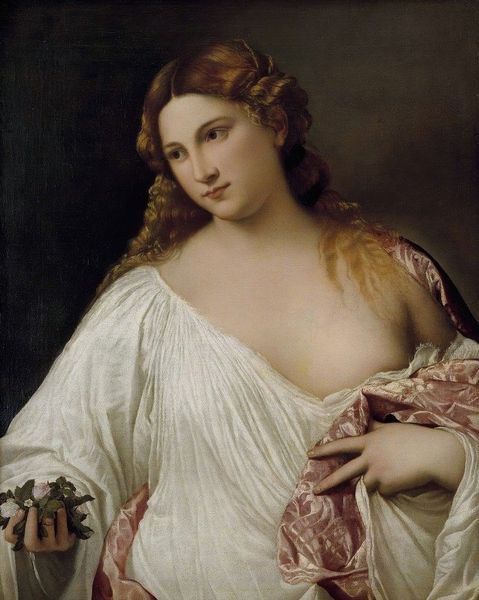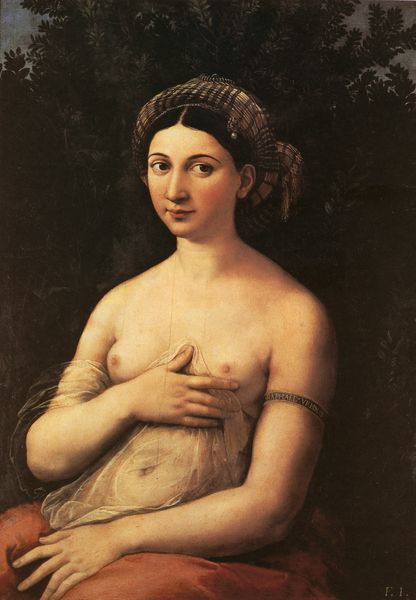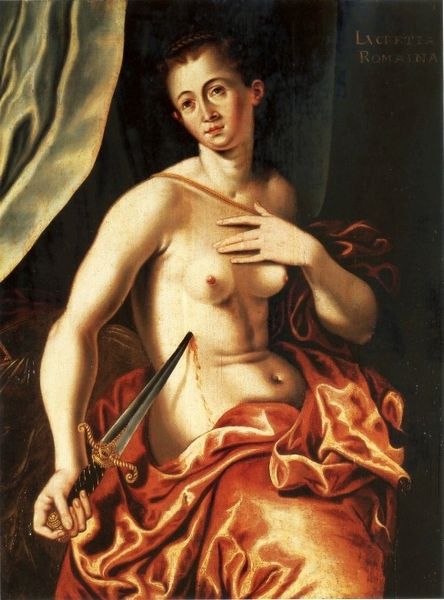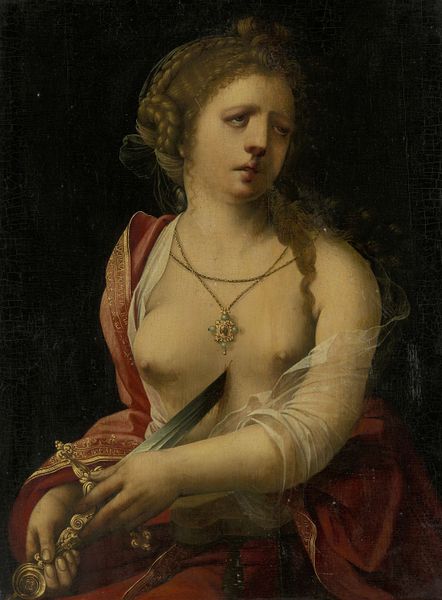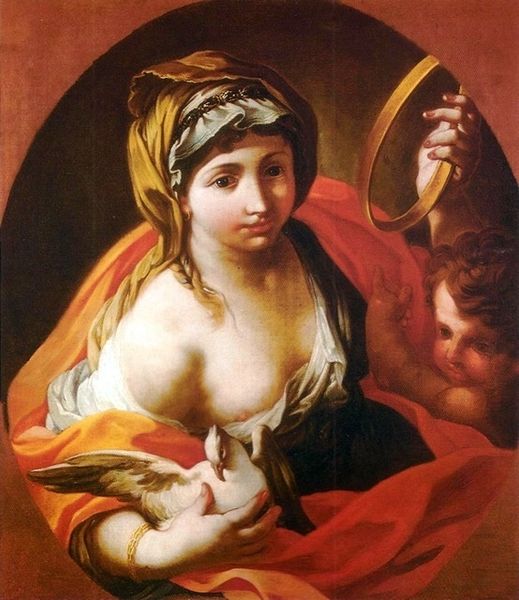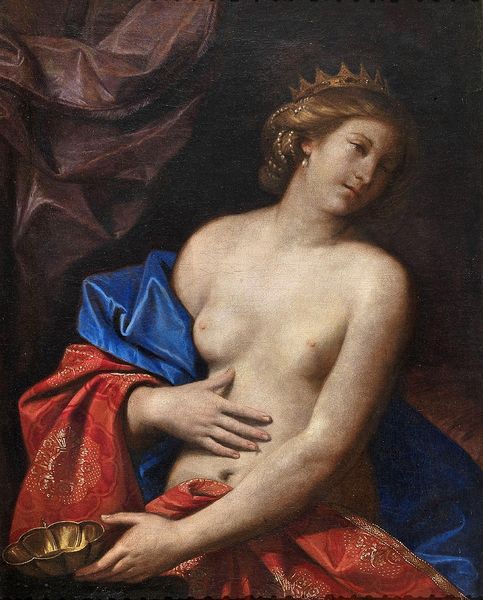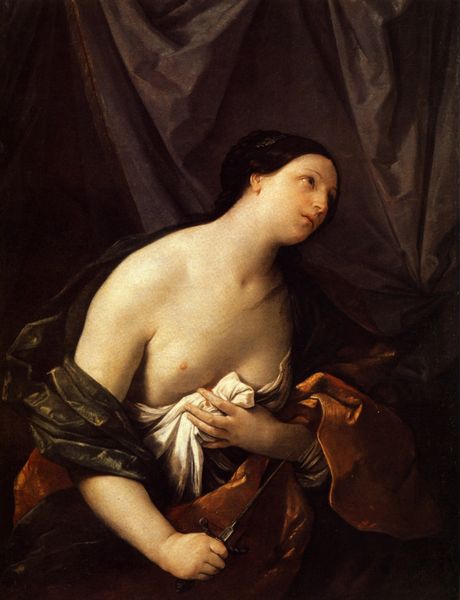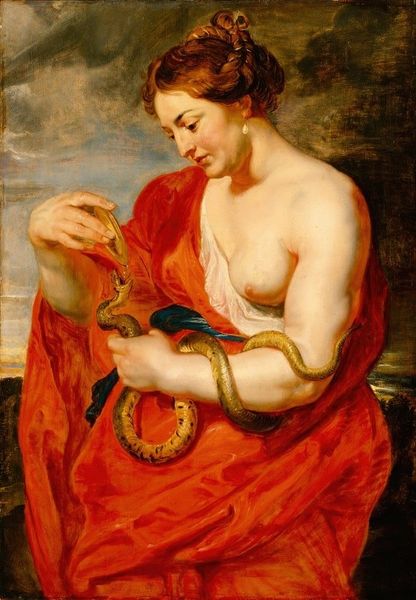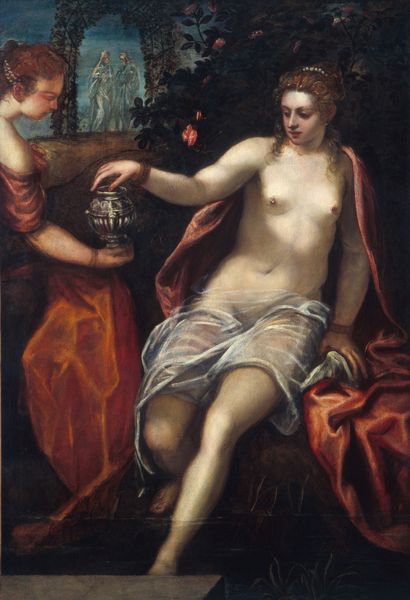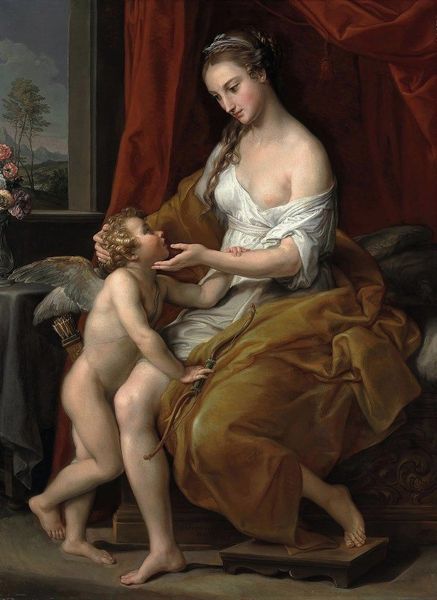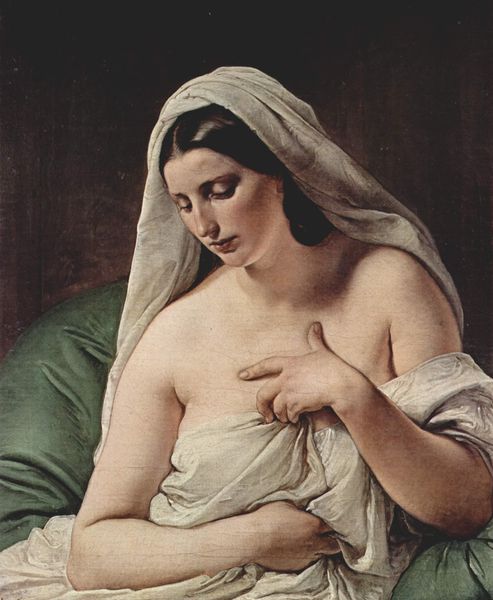
oil-paint
#
portrait
#
high-renaissance
#
allegory
#
oil-paint
#
italian-renaissance
#
nude
Copyright: Public domain
Curator: I’m struck immediately by the tension between the foreground figure's direct gaze and the implied voyeurism of the title and subject matter. There's a captivating visual game being played here. Editor: Indeed. What we have before us is, ostensibly, Giulio Romano’s oil on panel entitled "Woman Before the Mirror," an allegorical painting from the High Renaissance. Note how the artist renders her skin with a certain smoothness; it looks as though it’s made of marble. Curator: It's remarkable. Look how Romano uses the mirror and that implied interior scene in the distance. Those architectural structures behind, juxtaposed against the nude, almost pull you in. I find the contrast of warm and cool tones throughout this picture interesting. Editor: Absolutely. This artwork certainly aligns with other nudes of its time, a moment wherein classical ideas about idealized human form are revived, but there's also something that pushes back against this a bit too. I think the historical context of the Renaissance helps explain that fascination with the nude figure and a yearning to return to classical forms. It’s a complex interaction between past and present cultural trends. Curator: But let’s go back to the formal properties, if you don't mind. Consider how her face is lit. It guides the eye right to that face, while everything else is pushed slightly out of focus. This allows for some interesting relationships. Editor: True enough. By centering on her face like that, Romano evokes similar portrayals of the divine from the Early Renaissance; the contrast could almost suggest the figure herself has been newly deified. Yet her adornments--headband and pearl necklace--serve also as signifiers of her secular worldliness. It is the clever dance of sacred and profane elements that continues to enchant the painting’s reception and complicate its historic placement. Curator: I concede your points. Analyzing the interplay between its Renaissance context and those classical nods has unlocked this painting for me anew. It’s clear now how the painter engages viewers, even after so many years. Editor: Precisely. The painting really does stand as a wonderful example of the artist wrestling with his contemporary time and social trends. It offers a chance to observe historical perceptions and customs reflected back to us by time itself.
Comments
No comments
Be the first to comment and join the conversation on the ultimate creative platform.
